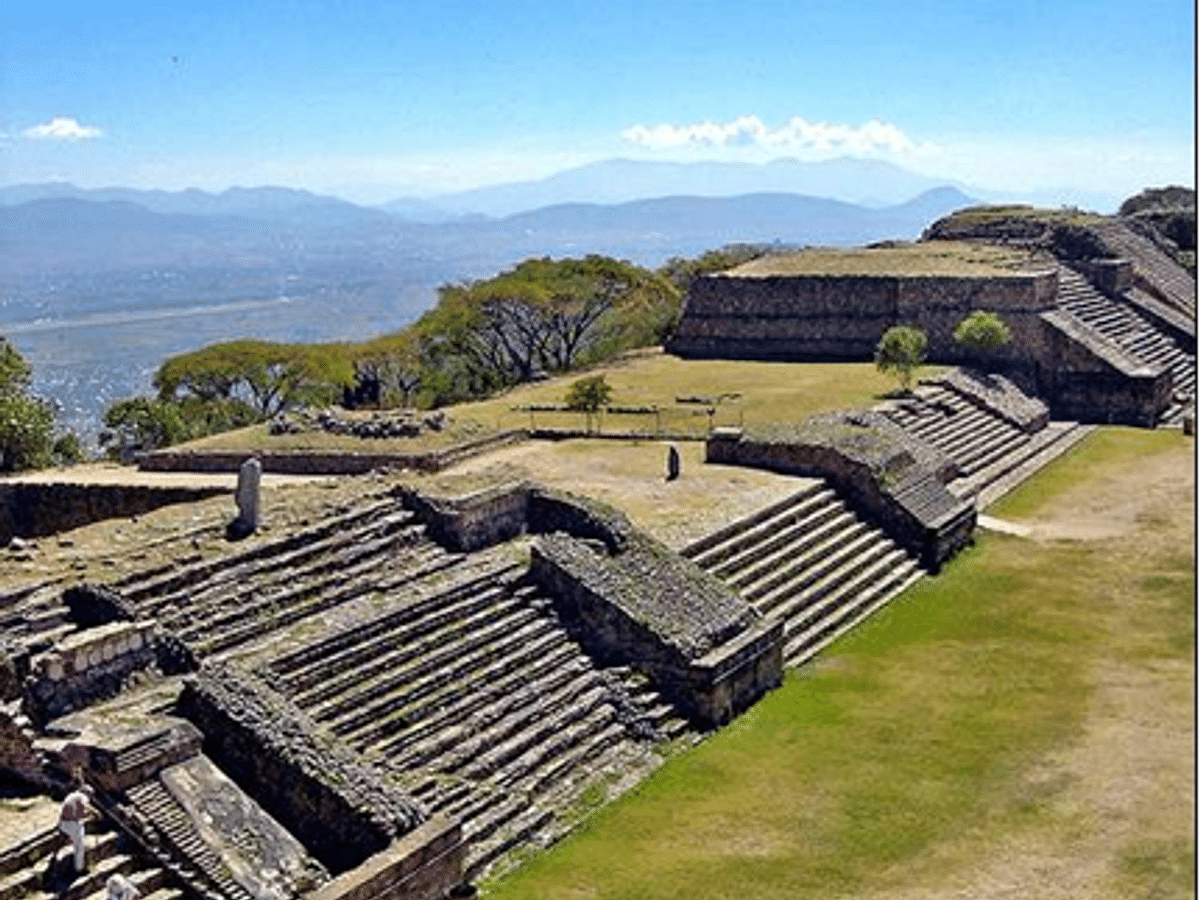Imagine stepping into a world where ancient ruins speak of a rich and storied past, where the echoes of an incredible civilization can still be felt today. At Monte Albán, nestled in the Oaxaca Valley of Mexico, a captivating journey awaits, as you unravel the mysteries and marvels of the Zapotec civilization. From the towering structures that stand as a testament to their architectural prowess to the intricate carvings that depict their beliefs and traditions, every corner of this archaeological site is a glimpse into a bygone era. Prepare to be transported through time as you explore the fascinating legacy of the Zapotec people, leaving you in awe of the ingenuity and cultural heritage that still permeate through the ancient stones.
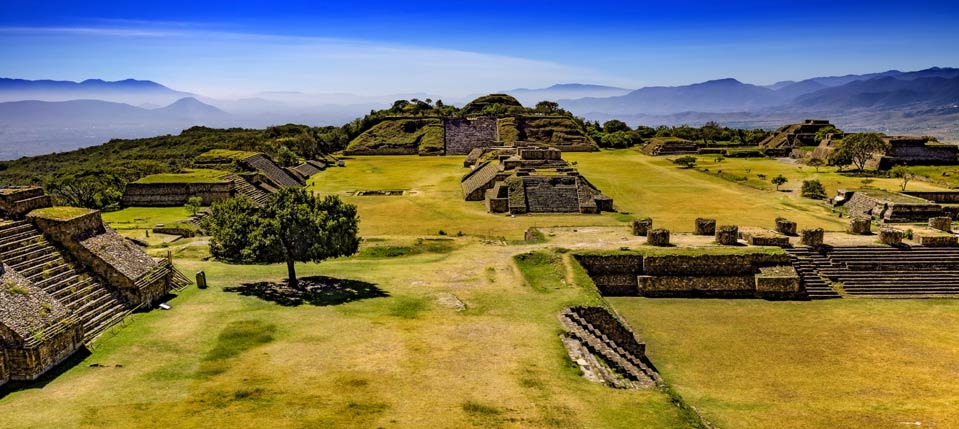
Pre-Columbian Civilization: Zapotec
The Zapotec civilization is one of the most remarkable pre-Columbian cultures in Mesoamerica. It flourished in what is now Oaxaca, Mexico, from approximately 500 BCE to 800 CE. The Zapotecs were known for their advanced knowledge in various fields, including architecture, astronomy, mathematics, and agriculture. Monte Albán, their capital city and religious center, is a testament to their incredible achievements and their enduring legacy.
Origins of the Zapotec Civilization
The origins of the Zapotec civilization can be traced back to the ancient village of San José Mogote, which dates back to around 1500 BCE. However, it was not until several centuries later, around 500 BCE, that the Zapotec civilization began to flourish. They established Monte Albán as their capital and quickly became a dominant force in the region. The Zapotec people developed sophisticated urban centers, intricate social hierarchies, and impressive artistic and architectural styles that influenced later cultures in the region.
Key Features of the Zapotec Civilization
The Zapotec civilization is renowned for its distinctive style of city planning, architectural design, and artistic expressions. They were skilled mathematicians, astronomers, and agriculturists. Their cities, like Monte Albán, were meticulously designed and featured complex layouts. The Zapotecs also had a strong political organization and governance, with a hierarchy led by powerful rulers and an elite class. Culturally, their religion and mythology played a crucial role, shaping their rituals, ceremonies, and daily life practices. The Zapotecs developed comprehensive calendar systems and made impressive mathematical achievements.
Religious Beliefs and Practices
Religion held a central place in the Zapotec culture. The Zapotecs believed in a pantheon of gods and revered numerous supernatural beings. Their religious practices were an integral part of their daily lives, influencing their social customs and rituals. They conducted ceremonies to honor their deities and sought their blessings for successful harvests, bountiful rains, and protection from natural disasters. The Zapotecs had elaborate creation stories and mythological figures that shaped their worldview and inspired their art. Religion was a unifying force for the Zapotec people, helping to strengthen their sense of identity and community.
Discovery and Excavation of Monte Albán
Monte Albán, the majestic ancient city and center of the Zapotec civilization, was uncovered in the late 18th century. The ruins of the city were first discovered by a Spanish explorer named José Antonio Gay in the 1780s. Gay stumbled upon the site while searching for treasure, but instead, he found something far more valuable: the ancient ruins of Monte Albán. Excavations at the site began in the early 20th century, revealing a fascinating glimpse into the rich history and achievements of the Zapotec civilization.
Uncovering the Ancient City
When Monte Albán was first discovered, it was a heavily overgrown site, covered in vegetation that had grown over it for centuries. The sheer magnitude of the ruins stunned those who first saw it. The site consisted of the remnants of hundreds of buildings, plazas, and ceremonial platforms. It was clear that Monte Albán was once a thriving city, bustling with activity and cultural significance.
Archaeological Excavations at Monte Albán
Since its initial discovery, numerous archaeological excavations have taken place at Monte Albán. These excavations have provided invaluable insights into the daily life, social organization, and architectural marvels of the Zapotec civilization. Archaeologists have uncovered a vast array of artifacts, including ceramics, sculptures, jewelry, and architectural remains. These discoveries have helped piece together the puzzle of the Zapotec civilization and shed light on their impressive achievements.
Preservation and Restoration Efforts
Over the years, significant efforts have been made to preserve and restore the ruins of Monte Albán. These preservation initiatives aim to protect the site from deterioration caused by natural elements and human activities. Conservation teams have meticulously documented and studied the artifacts found at Monte Albán, ensuring that they are properly stored and displayed. The restoration efforts have also included stabilizing the structures and maintaining the integrity of the site for future generations to appreciate and learn from.
Architecture and Urban Planning
The architecture of Monte Albán is a testament to the engineering skill and artistic flair of the Zapotec civilization. The city was strategically located on a hilltop, providing a commanding view of the surrounding valley. The layout and design of the city were carefully planned, with multiple plazas, temples, and residential areas. The buildings at Monte Albán were made of stone and featured intricate carvings and sculptural elements. The Zapotecs used advanced building techniques to construct terraces and platforms, creating a visually striking cityscape.
Layout and Design of Monte Albán
Monte Albán was designed with precision, featuring a grid-like layout that divided the city into different sectors. The main plaza served as the central hub, with several other plazas and courtyards surrounding it. The city was organized into residential zones, public areas, and ceremonial centers. There were also specific areas dedicated to the ruling elite, showcasing their social status and power.
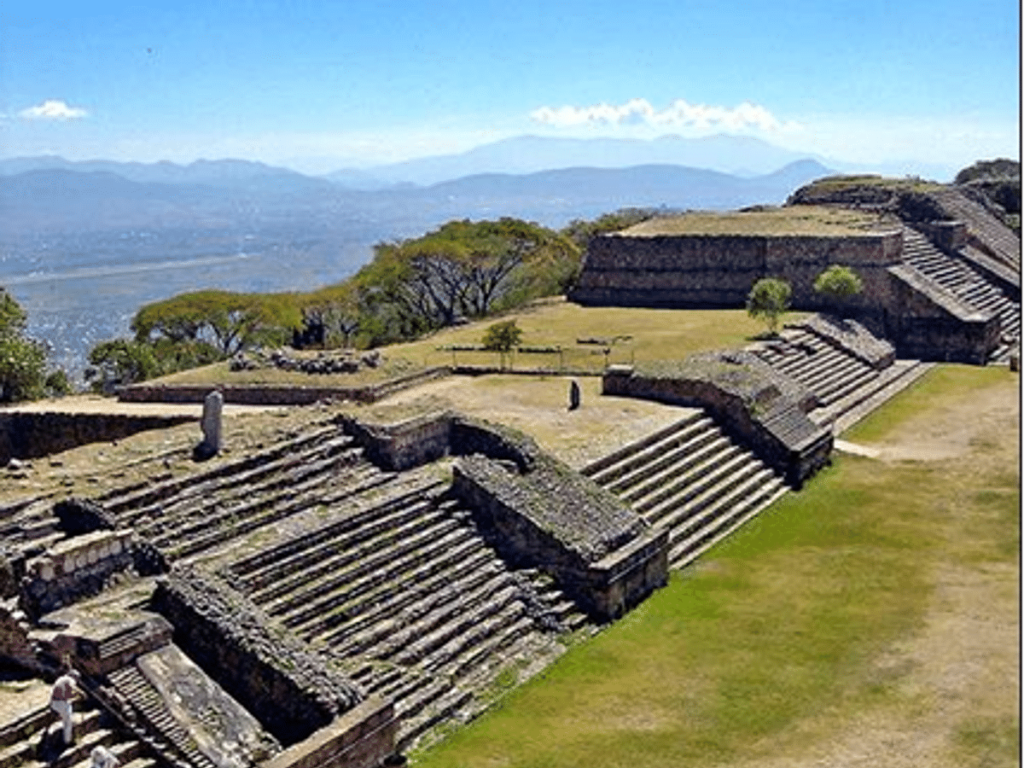
Main Structures and Buildings
Within the city, there were numerous impressive structures and buildings. One of the most iconic is the Building of the Dancers, which featured intricate stone carvings depicting dancers in elaborate costumes. The South Platform, also known as the Grand Plaza, was a massive platform that served as the gathering place for important ceremonies and events. The North Platform housed tombs of prominent Zapotec rulers, adorned with rich offerings and burial offerings.
Monuments and Temples
Monte Albán was adorned with splendid monuments and temples, showcasing the religious and cultural significance of the site. The Temple of the Danzantes, or the Danzante Platform, featured stone slabs carved with images of figures in contorted positions. These figures are believed to represent captured enemies or victims of sacrifice. The observatory, known as the Building J, was a unique structure that provided the Zapotecs with astronomical observations and insights.
Artistic and Symbolic Elements
Artistic expression played a crucial role in the Zapotec culture, and their architecture was no exception. Intricate carvings, intricate murals, and symbolic elements adorned the buildings and structures of Monte Albán. The carvings depicted mythological figures, gods, and important historical events, providing a visual representation of the Zapotec belief system and cultural significance. The artistic elements showcased the sophistication and creativity of the Zapotec civilization, capturing their unique worldview and aesthetic sensibilities.
Political Organization and Governance
The Zapotec civilization had a well-defined political organization and governance system. The society was structured hierarchically, with a ruling class and an elite class at the top. The ruler, known as the “Yalalag,” held significant power and authority, governing the city and making important decisions. The ruling elite held positions of influence and were responsible for maintaining social order and stability. The Zapotec civilization had a centralized form of government, with a complex bureaucracy to administer various aspects of society.
Hierarchy and Social Structure
The Zapotec society was divided into social classes, with different levels of prestige and privileges assigned to each. At the top were the ruler and the elite class, which included high-ranking officials, priests, and military leaders. Below them were the common people, who worked as farmers, artisans, and merchants. Slavery was also present within the society, with captured enemies and criminals serving as slaves.
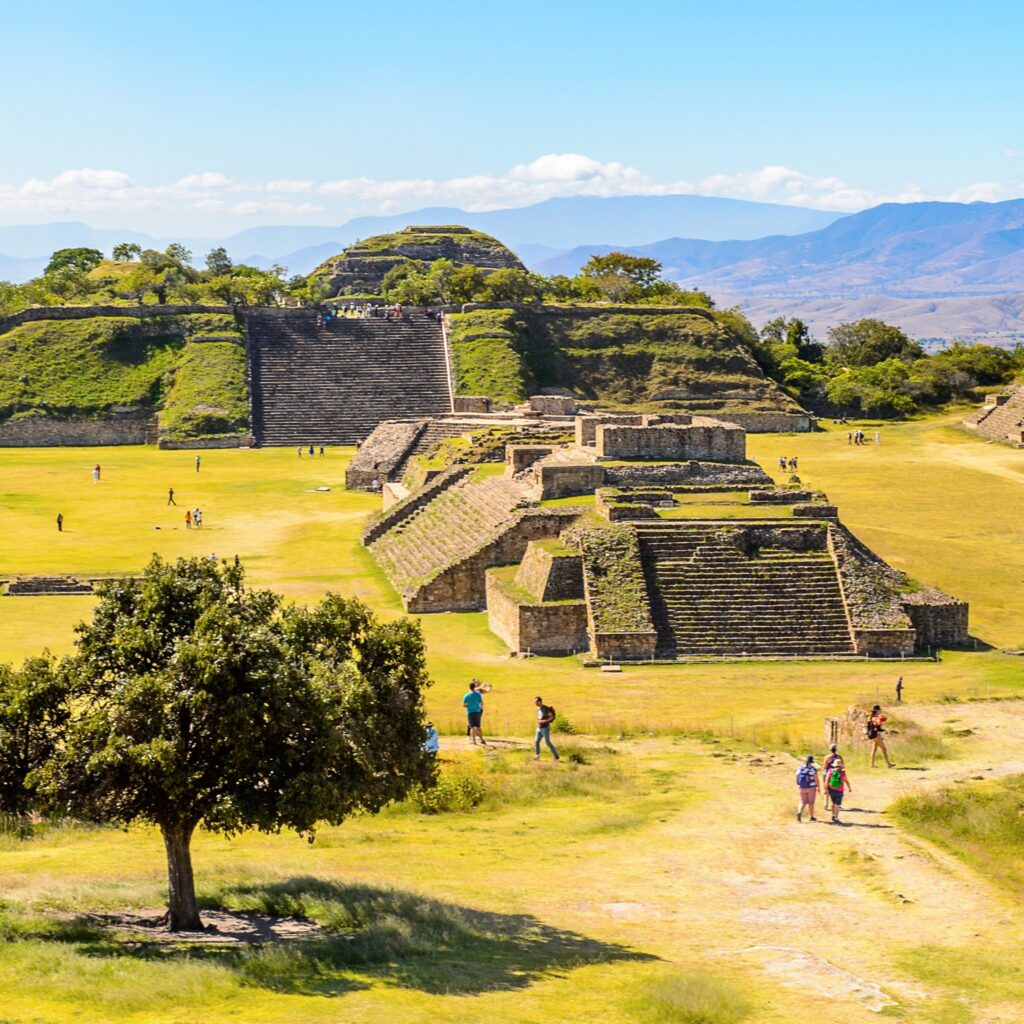
Role of the Ruler and Elite
The ruler and the elite played a crucial role in the Zapotec civilization. They were responsible for maintaining social order, providing protection, and overseeing the functioning of the city. The ruling class also had significant religious responsibilities, performing rituals and ceremonies to appease the gods and ensure the well-being of the community. The ruler and elite class enjoyed privileges and were often buried in elaborate tombs with intricate offerings, showcasing their high status and esteemed positions within the society.
Political Administration
Political administration in the Zapotec civilization was complex and extensive. The ruler and the elite class governed the city with the help of a bureaucracy that oversaw various aspects of society. The administration managed taxation, trade, justice, and defense. High-ranking officials, known as “batabes,” were responsible for overseeing specific administrative functions. The political organization of the Zapotec civilization allowed for the efficient functioning of the city and the maintenance of social harmony.
Economic Practices and Trade
The Zapotec civilization had a thriving economy based on agriculture, craftsmanship, and trade. They cultivated crops such as maize, beans, and squash, employing sustainable farming techniques. The Zapotecs were skilled artisans, producing exquisite pottery, textiles, jewelry, and figurines. These artistic productions were highly sought after and formed the basis of their trade networks. The Zapotec civilization maintained extensive trade connections with neighboring regions, allowing for the exchange of goods, ideas, and cultural influences.
Agriculture and Sustainable Farming
Agriculture was the backbone of the Zapotec economy. The Zapotecs employed sustainable farming practices to ensure the productivity and longevity of their agricultural lands. They constructed terraces and irrigation systems, allowing for efficient water management and maximizing crop yields. The cultivation of maize, beans, and squash provided the population with a stable food supply and formed the basis of their diet.
Craftsmanship and Artistic Productions
The Zapotec civilization was renowned for its exquisite craftsmanship and artistic productions. Skilled artisans crafted pottery, textiles, and jewelry that showcased their intricate designs and attention to detail. The pottery featured intricate patterns and motifs, reflecting the Zapotec worldview and cultural significance. Textiles were woven with vibrant colors and intricate patterns, reflecting the rich artistic traditions of the civilization. The jewelry, adorned with precious stones and metals, exemplified the craftsmanship and artistic prowess of the Zapotecs.
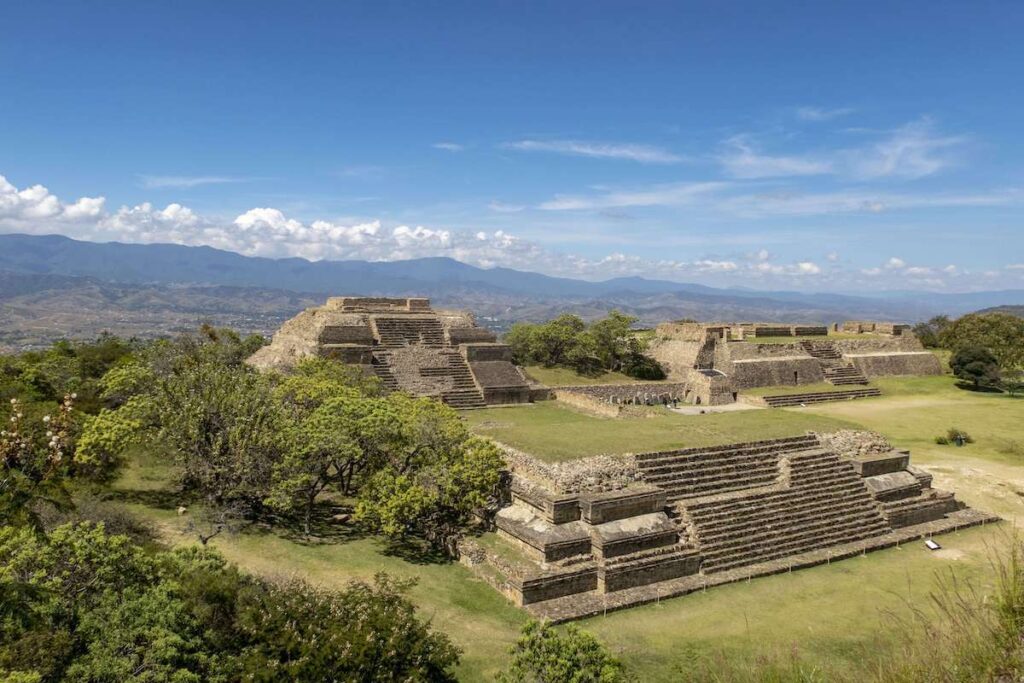
Trade Networks and Commerce
The Zapotec civilization had extensive trade networks that connected them to neighboring regions and cultures. They traded their agricultural products, such as maize and beans, as well as their artistic creations, including pottery and textiles. Trade routes spanned vast distances, facilitating the exchange of goods and ideas. The Zapotec civilization thrived economically due to their active involvement in commerce and their ability to forge strong trade relationships with other societies.
Astronomy and Mathematics
The Zapotec civilization had a deep understanding of celestial bodies and made significant contributions to the fields of astronomy and mathematics. Their astronomers carefully observed the movements of the sun, moon, and stars, allowing them to develop accurate calendar systems. The Zapotec calendar was highly precise and played a crucial role in religious ceremonies and agricultural practices. The mathematicians of the Zapotec civilization made impressive achievements, including the use of a base-20 numeral system and the development of advanced mathematical concepts.
Understanding of Celestial Bodies
The Zapotecs had a profound understanding of celestial bodies and their movements. They carefully observed the sun, moon, and stars, noting their regular patterns and cycles. These observations allowed them to develop an accurate calendar system that aligned with the astronomical events. The Zapotecs recognized the importance of celestial bodies in their religious and agricultural practices, using their knowledge to predict seasons, solstices, and eclipses.
Calendar Systems
The Zapotec calendar system was highly precise and played a vital role in their religious and agricultural practices. The calendar consisted of several intercalary cycles, which accounted for the discrepancies between astronomical events and the solar year. The calendar helped the Zapotecs determine the best times for planting and harvesting crops, as well as schedule religious ceremonies and festivals. The calendar system reflected the deep reverence the Zapotecs held for celestial bodies and their understanding of the natural world.
Mathematical Achievements
The mathematicians of the Zapotec civilization made impressive achievements in the field of mathematics. They developed a sophisticated base-20 numeral system, which involved using dots and bars to represent numbers. This system allowed them to perform complex calculations and mathematical operations. The Zapotecs also made notable advances in geometry and trigonometry, employing these mathematical concepts in their architectural designs and astronomical observations.
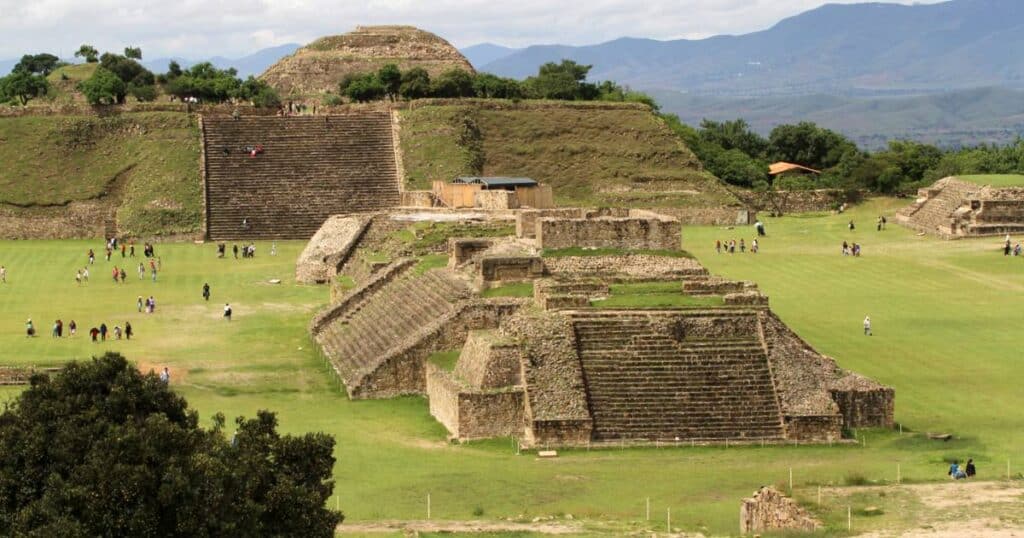
Religion and Mythology
Religion played a central role in the Zapotec civilization, shaping their beliefs, rituals, and daily life practices. The Zapotecs worshipped a pantheon of gods and revered numerous supernatural beings. Their religious practices were deeply ingrained in their society, influencing their social customs and cultural expressions. The Zapotecs had elaborate creation stories and mythological figures that helped explain the world around them and form the basis of their spiritual beliefs.
Deities and Supernatural Beings
The Zapotecs believed in a wide array of deities and supernatural beings. They worshiped gods associated with natural elements such as the sun, moon, rain, and agricultural fertility. Among their pantheon of gods were figures like Cocijo, the god of rain and lightning, and Xipe Totec, the god of agriculture and renewal. The Zapotec religion also incorporated beliefs in ancestral spirits and revered their ancestors for guidance and protection. These deities and supernatural beings played a crucial role in the religious and cultural practices of the Zapotec civilization.
Rituals and Ceremonies
Rituals and ceremonies held great importance in the religious life of the Zapotec civilization. The Zapotecs conducted ceremonies to honor their gods and seek their blessings for successful harvests, protection from disasters, and overall well-being. These ceremonies often involved intricate dances, music, and offerings. They served as a means to communicate with the spiritual realm and maintain a harmonious relationship between the natural and supernatural realms. Rituals and ceremonies were communal events that brought the Zapotec community together and reinforced their shared beliefs and values.
Creation Stories and Mythological Figures
The Zapotec civilization had elaborate creation stories and mythological figures that provided an understanding of the world and its origins. These mythological stories explained how the gods created the universe and shaped the natural elements. The Zapotecs believed in powerful figures like the Feathered Serpent, who played a crucial role in the creation of humanity. These mythological figures were revered and celebrated through art, architecture, and rituals, emphasizing their significance in the Zapotec belief system.
Daily Life and Social Customs
The daily life of the Zapotec people was shaped by their social customs and cultural traditions. Their housing and domestic life reflected their social structure, food and cuisine showcased their agricultural practices, and art, music, and dance exemplified their artistic expressions and entertainment. Clothing and personal adornments played a role in defining individual and group identities within the society.
Housing and Domestic Life
The Zapotec people lived in urban centers, with Monte Albán being the most prominent city. The residential areas within the city were organized based on social hierarchies, with the ruling elite living in more elaborate and spacious houses. Houses were made of stone and adobe, featuring multiple rooms and courtyards. The size and design of the houses varied depending on the social status of the occupants. Domestic life revolved around family units, with extended family members often living together. The Zapotecs engaged in activities such as cooking, weaving, and pottery-making as part of their daily routine.
Food and Cuisine
The Zapotecs were primarily agrarian, relying heavily on agriculture for their food supply. Their cuisine centered around staple crops such as maize, beans, and squash. Maize was a particularly important crop, and it was ground into flour to make tortillas, tamales, and other traditional dishes. Beans were often used as a source of protein, and squash provided essential vitamins and minerals. The Zapotecs also cultivated various fruits, vegetables, and herbs, adding variety and flavor to their meals. Their diet was supplemented by hunting and fishing, providing additional sources of sustenance.
Art, Music, and Dance
Artistic expression held a significant place in Zapotec culture, and art, music, and dance were integral parts of their social and religious practices. The Zapotecs produced intricate pottery, textiles, and jewelry that reflected their artistic sensibilities and cultural beliefs. Music and dance were intertwined, with rhythmic drumming and melodic instruments accompanying ceremonial rituals and celebrations. Dance served as a means of storytelling, conveying mythological narratives and historical events. Through art, music, and dance, the Zapotecs expressed their creativity, celebrated their heritage, and strengthened their community bonds.
Clothing and Personal Adornments
Clothing played a vital role in the Zapotec society, serving both functional and symbolic purposes. The Zapotecs wore garments made from textiles that they themselves wove. The textiles were dyed using natural pigments, resulting in vibrant colors and intricate patterns. The clothing worn by individuals often represented their social status and cultural identity. The ruling elite, for example, wore garments embellished with precious stones and metals, symbolizing their elevated position within the society. Personal adornments, such as jewelry and headdresses, also added to the overall aesthetics and individuality of the Zapotec people.
Decline and Abandonment
The decline and eventual abandonment of Monte Albán, the capital city of the Zapotec civilization, remain a topic of debate among historians and archaeologists. Various factors may have contributed to the decline, including political unrest, environmental changes, and invasions from neighboring cultures. It is likely that a combination of these factors led to the decline of the Zapotec civilization and the eventual abandonment of Monte Albán.
Potential Causes of Decline
Political instability within the Zapotec civilization, which may have been exacerbated by internal power struggles and external influences, is believed to have played a role in its decline. Environmental factors, such as droughts or other climatic changes, could have led to agricultural difficulties and decreased food production. Additionally, the rise of other powerful civilizations in the region, such as the Mixtecs and the Aztecs, may have put pressure on the Zapotec civilization, leading to conflict and decline.
Abandonment of Monte Albán
The exact reasons for the abandonment of Monte Albán remain uncertain. However, it is believed that a combination of factors contributed to the eventual abandonment of the city. As the political situation deteriorated and external pressures increased, the elite class and ruling elite likely migrated to other areas. The lack of resources and agricultural struggles may have made it unsustainable for the common people to continue residing in the city. Over time, the once-thriving Monte Albán was left abandoned, its structures left to decay and be overtaken by nature.
Legacy and Influence on Later Cultures
Despite its decline and abandonment, the Zapotec civilization left behind a lasting legacy that continues to influence later cultures in Mesoamerica. The architectural and artistic achievements of Monte Albán inspired future civilizations, influencing their own artistic styles and city planning. The advanced knowledge in astronomy and mathematics contributed to the development of subsequent calendar systems and mathematical concepts. The Zapotec civilization’s rich mythology and religious beliefs also had an enduring impact on the cultural practices and spiritual traditions of later societies in the region.
Current Significance and Tourism
Today, Monte Albán stands as a remarkable archaeological site, attracting visitors from around the world who are captivated by the rich legacy of the Zapotec civilization. The site offers a glimpse into the ancient city’s magnificence, with its sprawling ruins, impressive structures, and intricate artwork. The cultural and educational initiatives surrounding Monte Albán aim to preserve and share the history of the Zapotec civilization with visitors. Tourists can explore the ruins, visit the on-site museum, and engage in cultural activities that provide insights into the customs, beliefs, and achievements of the Zapotecs. Monte Albán continues to be a significant destination for those seeking to immerse themselves in the ancient wonders of Mesoamerica.
